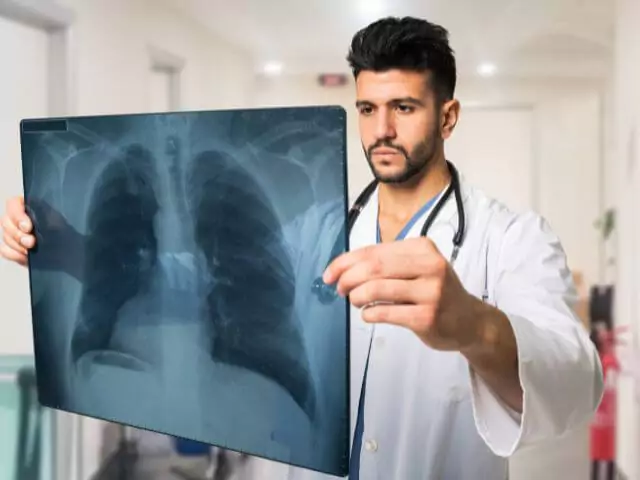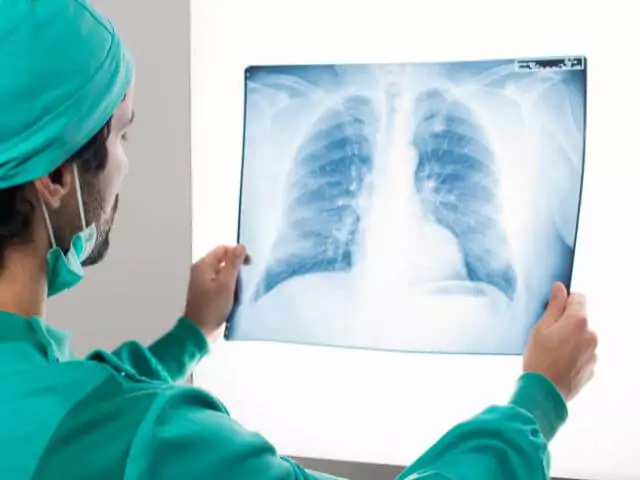When you think of healthcare professionals, Radiographers aren’t typically the first people that spring to mind. As they generally work behind the scenes, they aren’t the most recognisable professional in the sector, but that’s not to say their work isn’t important.
Radiographers are pivotal in the early detection of life-threatening illnesses and diseases. Without their technical abilities and analytical minds, many people wouldn’t have a diagnosis for the ailments they are experiencing.
This would not only hinder the ability to identify the necessary treatment but the chance to catch the problem early, which is often vital for the effective treatment of diseases like cancer.
This is why working as a Radiographer is the perfect way to have a job that is both significant and rewarding. If you’re looking for a job in healthcare that ticks these boxes and indulges an interest in technology, keep reading.
What Does a Radiographer Do?
The main aim of this profession is to use advanced medical equipment in combination with radiation to diagnose or treat both ill and injured patients.
As such, the work of a Radiographer falls into two categories:
Diagnostic Radiography
In this role, you would use different techniques and equipment to identify what has caused the patient’s illness or injury. The technology used would depend on the ailment being addressed, but this can be a mix of X-rays, MRI machines and ultrasounds.
Therapeutic Radiography
In this role, you harness various radiation types to treat an illness or injury. You will mainly work with patients who have different cancers and tumours and provide them with frequent treatments, perhaps on a daily basis. For this, you would often use X-rays and other ionising radiation, because of the length of treatments you will tend to build a close professional relationship with the people you care for.
The level of support Radiographers provide to patients who are often unwell, in pain and anxious about their future health makes them an incredibly valuable part of the patient’s journey. As such, they are trained to be empathetic, and delicate and to deliver a service that is entirely focused on the patient's needs.

Where do Radiographers Work?
The location you work in depends on the type of radiography position you hold. As a Diagnostic Radiographer, you would tend to be based in a hospital radiography department, providing support to most departments in the hospital.
This could be anything from taking images of injuries that come into A&E to precise images of the surgical site for the operating theatre. You could also be based in outpatient clinics.
As a Therapeutic Radiographer, you would typically work within a specialised radiotherapy or oncology centre. This would necessitate you to wear a specific uniform and perhaps additional protective clothing too.
You can expect to work approximately 37 hours a week in both roles. This can often include shifts and the need to work unsocial hours.
What is a Radiographers's Salary?
Once you graduate as a Radiographer, you can expect a starting salary of around £24,900 a year (band 5 in the NHS). This increases with the years of service you provide and the seniority of your position. On average, experienced Radiographers earn between £35,000 to £40,000 per year (band 6).
With further experience and qualifications, you can work your way up to earning band 7 or 8 salaries starting at around £38,800 and £51,600 per year respectively.

Career Progression Opportunities for Radiographers
Most radiography jobs UK are with the NHS, so the career progression route for Radiographers is relatively straightforward. The Society of Radiography suggest a four-tier progression path, which the NHS emulate as below:
Assistant Practitioner
The ideal position for those wanting to gain work experience as a Radiographer and find their feet. You aren’t qualified at this level, but it’s a great way to gain hands-on skills and find out if this career path is for you.
Radiographer Practitioner
This is the role you will assume once you graduate. Both graduate Diagnostic and Therapeutic Radiographers will receive ample guidance and support at this stage while they gain experience in various areas. This is usually set at band 5 in the NHS but if you progress to band 6 you can help supervise and develop junior colleagues.
With experience as a Radiographer Practitioner, you can start to discover specialisms like mammography practice, medical magnetic resonance, forensic radiography CT or MRI procedures and more.
Depending on what these are you may need either in-house training or to study further at the postgraduate level. At this level of your career, you could also go into practice education, lecturing or research roles with the relevant additional qualifications.
Advanced Practitioner
At this stage, you will contribute to idea generation, service development, caseload maintenance and cross-department support. You can also get into managerial and team leader roles where you will drive service delivery.
Further academic job opportunities come available to you at this point too. If you’re qualified for them you could become a research fellow or senior lecturer, more commonly, this requires a masters level of education.
Consultant Practitioner
In this role, you are responsible for both clinical and managerial tasks. This often requires you to be educated to doctorate or PhD level, along with having extensive clinical experience.
The Society of Radiographers stipulate these four domains are crucial to the role:
- Expert clinical practice
- Professional leadership and consultancy
- Education, training and development, practice and service development
- Research and evaluation

How Many Years Does It Take to Become a Radiographer?
You need a degree that is approved by the Health and Care Professionals Council (HCPC) to become a Radiographer. This can take three or four years of full-time study depending on the degree you choose. Naturally, part-time radiography courses take longer to study.
If you want to get qualified as a Radiographer quickly, the best way to do this is by choosing carefully when it comes to studying courses that allow you onto your degree. If you go to college to get the 2-3 A Levels required, this can take two years to complete.
However, if you opt to study an Access to radiography course, this time can be cut in half. This is because Access to HE radiography courses can be studied online, which makes it possible for you to move through the learning materials much faster.
Students who study Access to radiography courses with learndirect on average are finished within 9-12 months. So, if you are able to commit the time to your course, you can have it finished and be on the way to university within a year!
Get Started Today!
You can start a career that utilises technology to diagnose, treat and prolong the lives of patients by studying radiography courses online.
Our Access to radiography course will give you the grounding in radiography knowledge you need for your degree, as well as the brush up on study skills you may need if you have been out of education for some time.
Find out more information about studying radiography online by speaking to one of our Course Executives on 01202 006 464 or by contacting them online. Alternatively, you can view our Access to radiography course in more detail by clicking below.



















